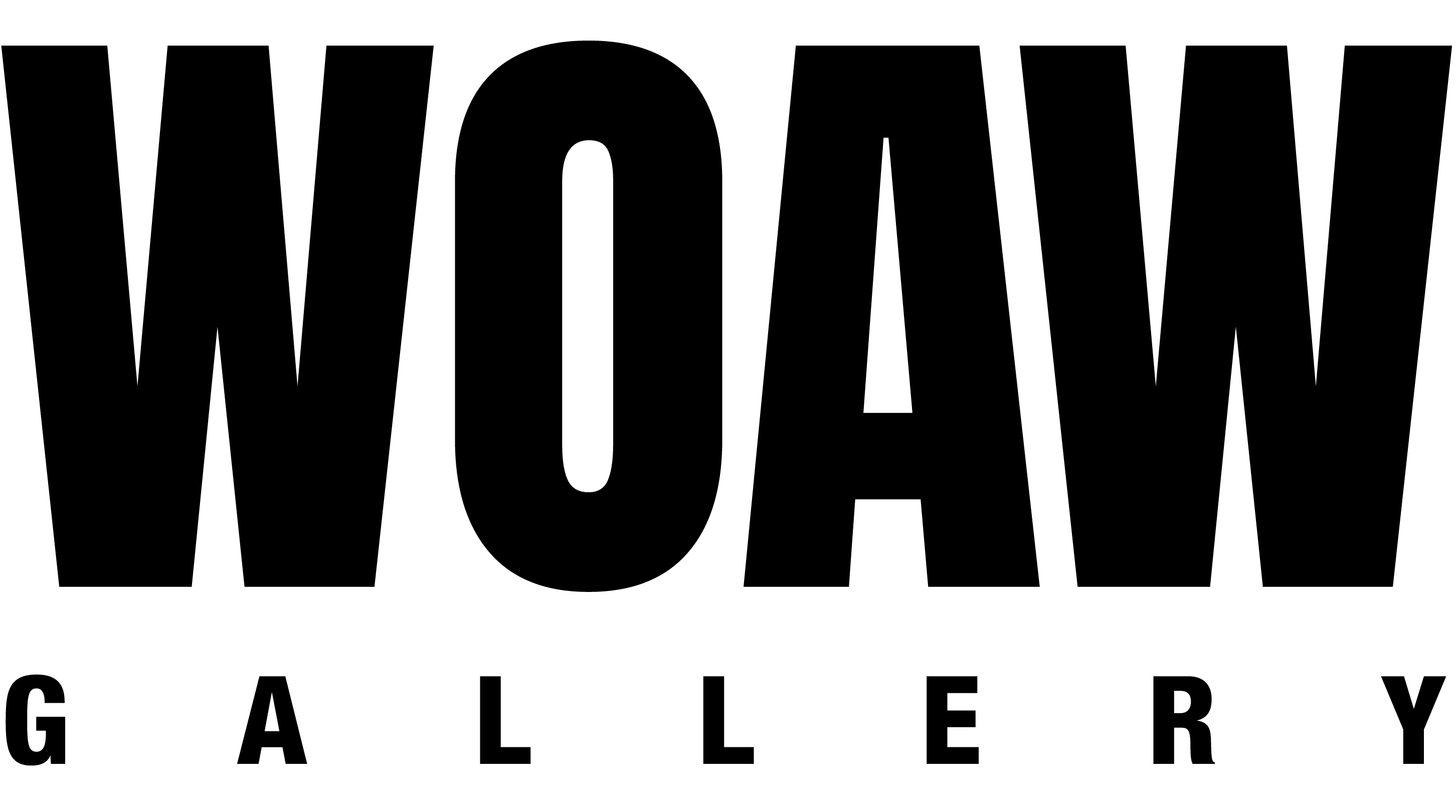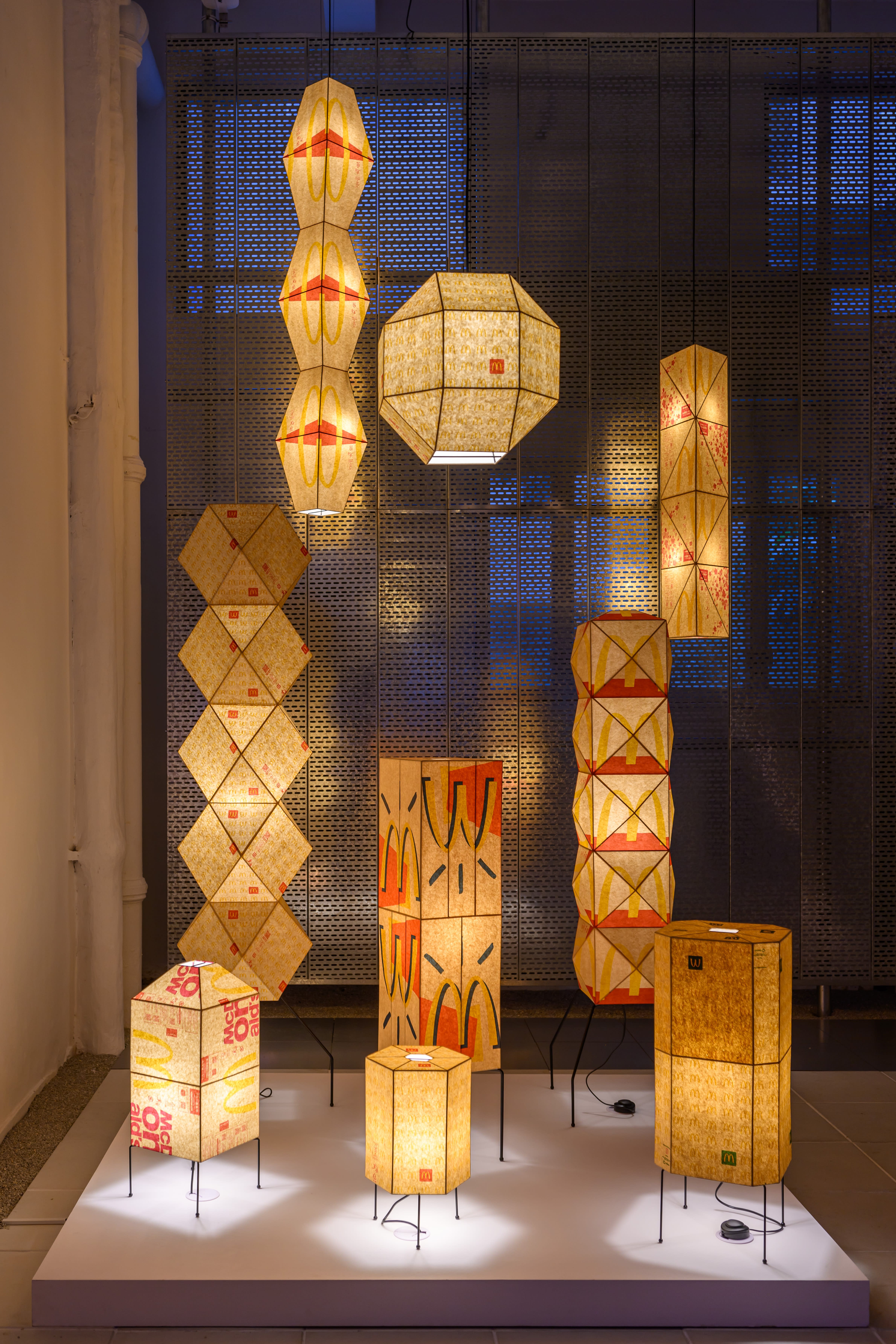
Installation view of "Pop Craft Structure"
From the lamps to the chairs, transformation is a fundamental theme in the artworks of Korean artist Gyuhan Lee. Like a magician, he reimagines everyday objects, breathing new life into them through his skillful craftsmanship.
In his latest solo exhibition at WOAW Gallery, titled Pop Craft Structure, Lee not only showcases his iconic series of McDonald’s lamps but also unveils some of his breakthrough on the art creations, including video installations, ceiling lamps, and striking pieces inspired by the Maison Hermès in Tokyo. Each element reflects his ongoing exploration of materiality and meaning, inviting viewers to engage with the familiar in unexpected ways.
Many of the materials Lee employs feature predetermined logos and vibrant colors, which he deftly navigates to create a harmonious balance between structure and form. His works invite contemplation on the interplay of color and composition, illustrating how even the most commonplace items can be transformed into art. Through this exhibition, Gyuhan Lee encourages us to reconsider our perceptions of everyday objects, revealing the beauty and complexity that lie beneath their surface.
Many of the materials Lee employs feature predetermined logos and vibrant colors, which he deftly navigates to create a harmonious balance between structure and form. His works invite contemplation on the interplay of color and composition, illustrating how even the most commonplace items can be transformed into art. Through this exhibition, Gyuhan Lee encourages us to reconsider our perceptions of everyday objects, revealing the beauty and complexity that lie beneath their surface.
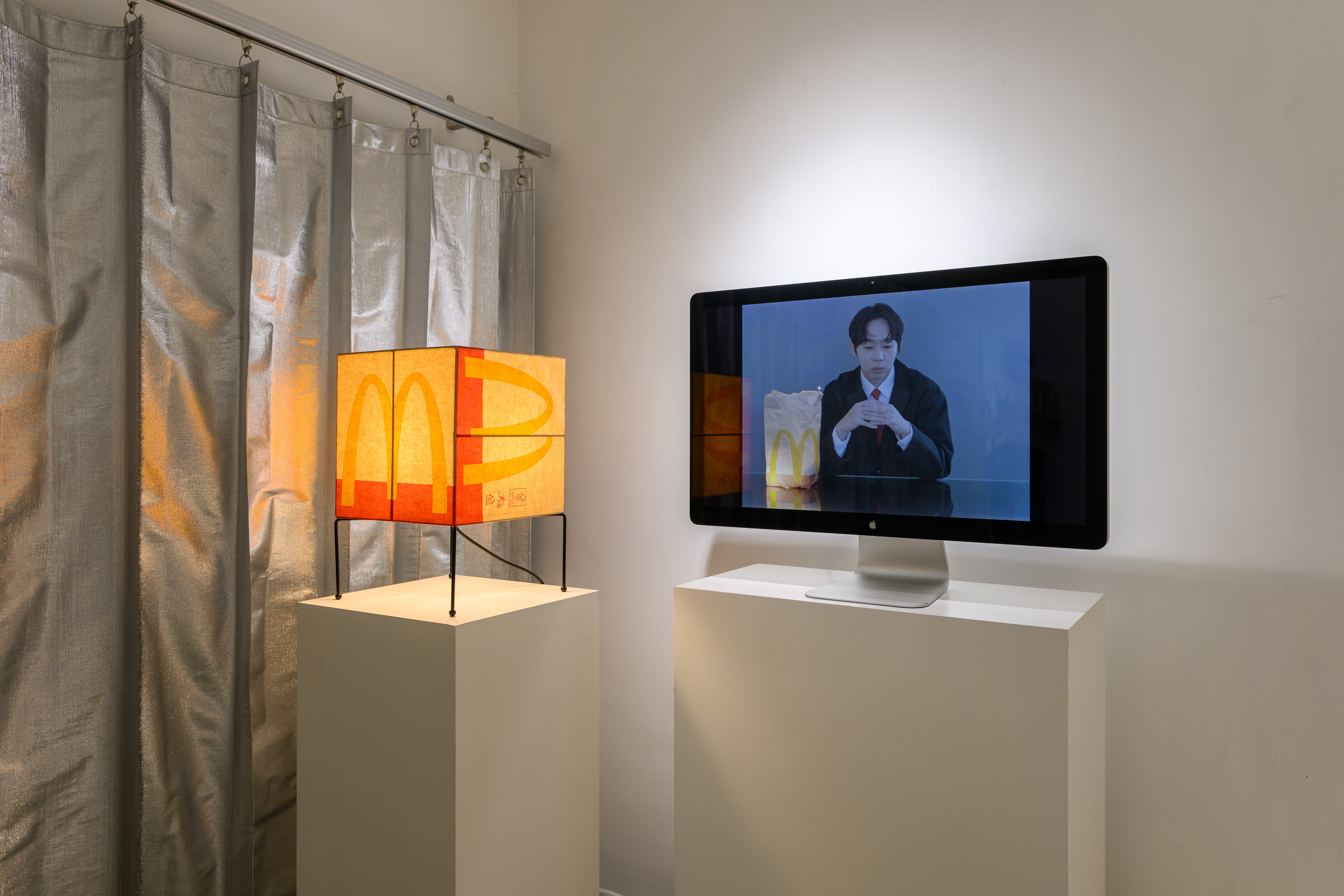
Installation view of "Pop Craft Structure"
What initially inspired you to create art, and how has that motivation evolved over time?
When I was a child, I was deeply fascinated by the act of making things with my hands. I loved transforming simple materials into objects that reflected my imagination, which felt like a powerful and intuitive way to express myself. This joy in crafting laid the foundation for my artistic journey.
Over time, my motivation evolved as I started to observe and reflect on the brands and products I consume in daily life. These objects, often overlooked and discarded, became a source of inspiration. By linking the act of creation with my personal consumption habits, I found a way to reimagine these materials as something meaningful. My work now explores the intersection of handmade craftsmanship and the mass-produced items we interact with, creating a dialogue between personal creativity and the consumer culture that surrounds us.
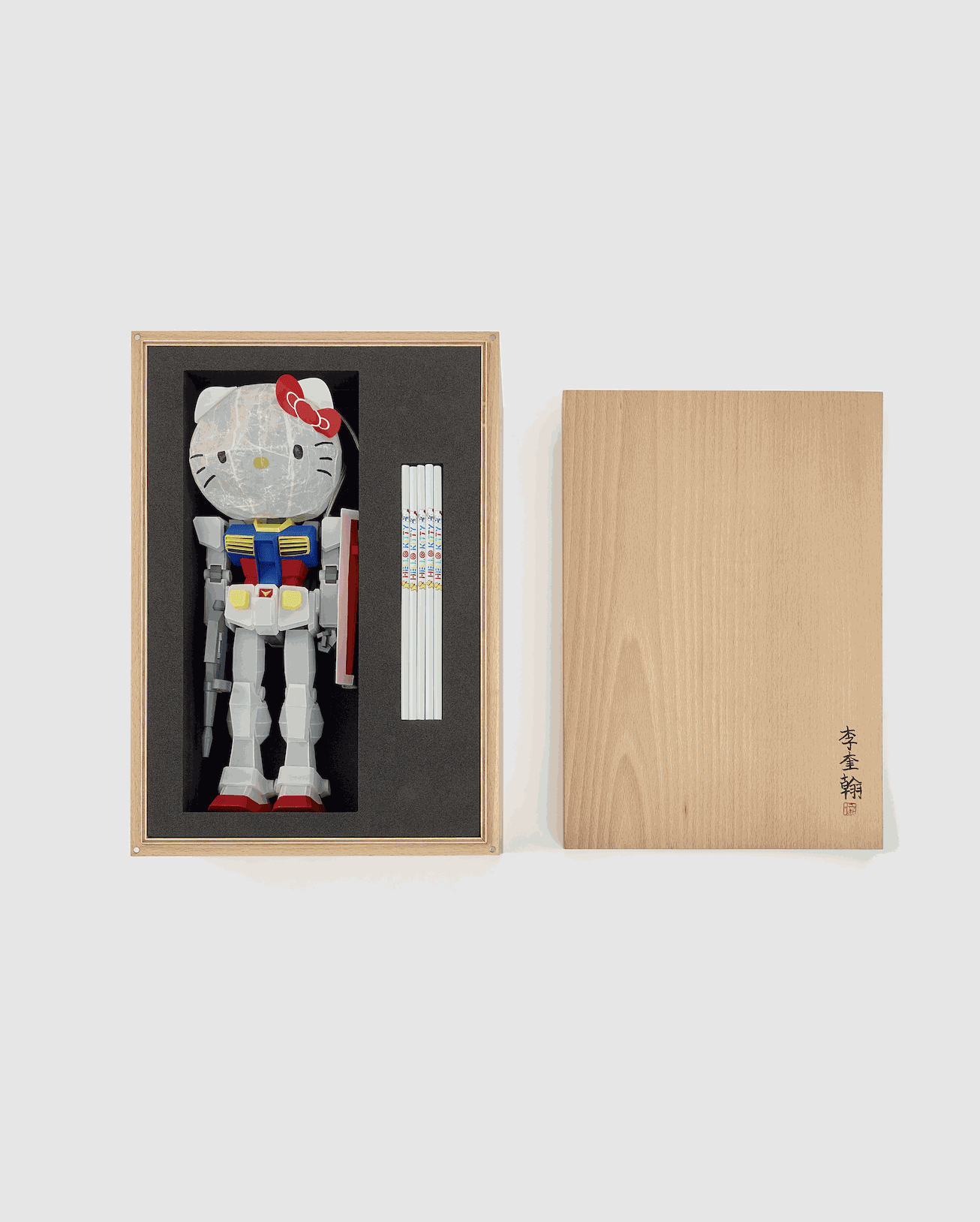
Gyuhan Lee, Ready-made paper sculpture (in box), 1999
In what ways do you believe your cultural background influences your artistic expression, and how do you see it reflected in this exhibition?
I believe my cultural background has significantly influenced my artistic expression by shaping my sensitivity to symbolic imagery and storytelling. As a child, I was deeply captivated by films, animation, and fashion—mediums that visually unfold narratives and evoke emotions. Inspired by the symbolic imagery found in these mediums, I continue to explore and reinterpret them through my own artistic language.
In this exhibition, that influence is reflected in how I work with materials and logos derived from consumer culture. These familiar symbols are transformed into something personal, inviting viewers to perceive them beyond their commercial context. This approach merges my passion for storytelling with my artistic practice, aiming to create works that resonate both culturally and emotionally.

Gyuhan Lee, Nikes - shoe box chair, 2024
You mentioned the use of "Hanji" in your creations. Can you tell us more about this traditional paper and how you apply its techniques in your work?
Hanji, a traditional Korean paper made from the inner bark of the mulberry tree, is renowned for its strength, flexibility, and natural texture. Its production involves a meticulous process of steaming, pounding, and forming the fibers into sheets, which are then dried in the sun. This traditional craft embodies sustainability and longevity, qualities that resonate with my artistic practice.
In my work, I use Hanji to introduce a tactile and organic element, contrasting with the industrial and mass-produced materials I often incorporate. By combining Hanji with logos and patterns from consumerist packaging, I recontextualize these materials, blending the traditional with the modern. Hanji's versatile nature also allows me to experiment with layering, shaping, and texturing, providing a unique aesthetic and symbolic dimension to my pieces.
Hanji, a traditional Korean paper made from the inner bark of the mulberry tree, is renowned for its strength, flexibility, and natural texture. Its production involves a meticulous process of steaming, pounding, and forming the fibers into sheets, which are then dried in the sun. This traditional craft embodies sustainability and longevity, qualities that resonate with my artistic practice.
In my work, I use Hanji to introduce a tactile and organic element, contrasting with the industrial and mass-produced materials I often incorporate. By combining Hanji with logos and patterns from consumerist packaging, I recontextualize these materials, blending the traditional with the modern. Hanji's versatile nature also allows me to experiment with layering, shaping, and texturing, providing a unique aesthetic and symbolic dimension to my pieces.
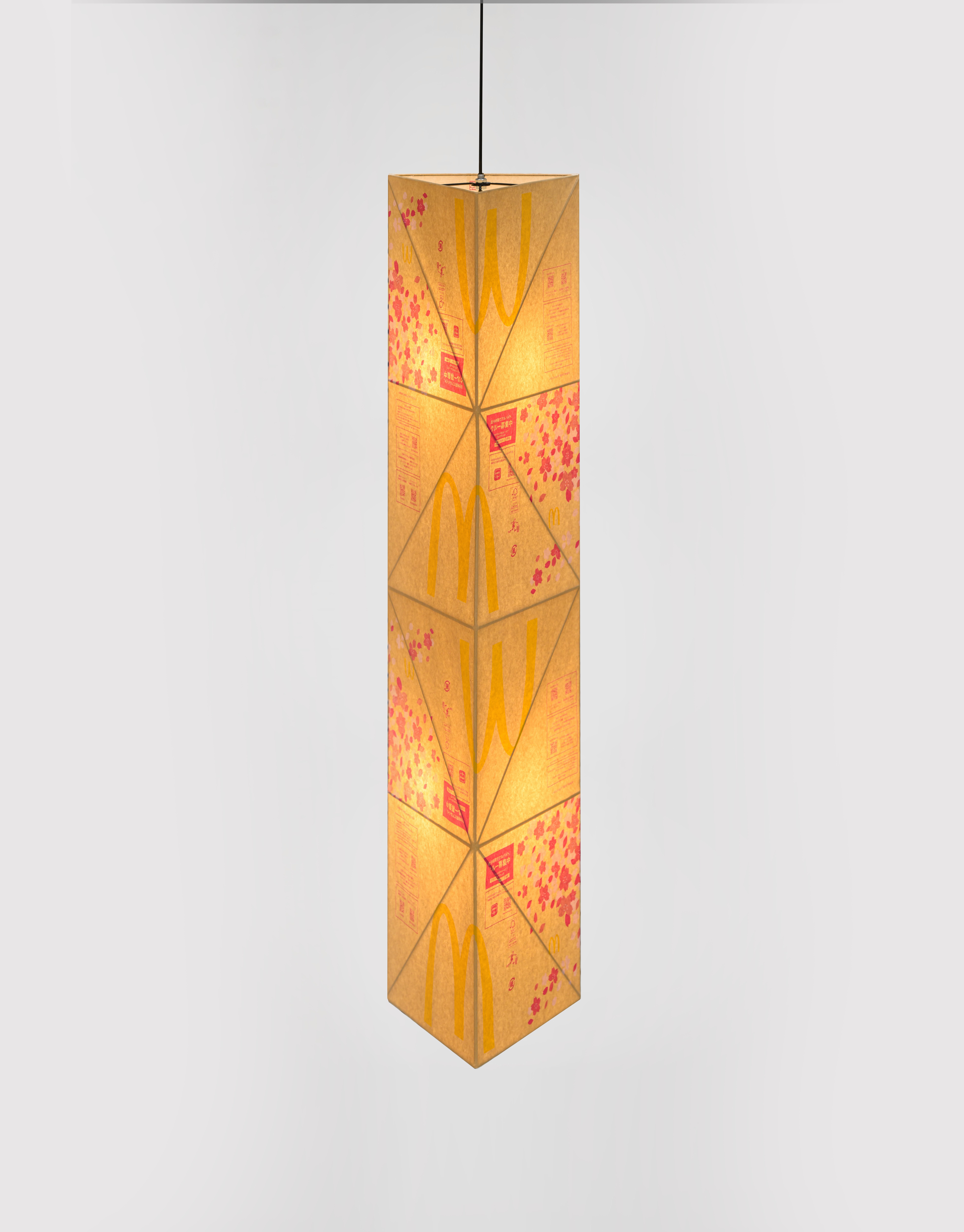
Gyuhan Lee, Cherry Blossom Edition: McDonald’s paper bag ceiling lighting 9-5, 2024
Your use of unconventional materials, such as the paper bag from McDonald's, is intriguing. Can you share your approach to sourcing these materials and what influences your decision to incorporate them into your artworks?
My approach to sourcing unconventional materials, like the McDonald's paper bag, starts with reflecting on my own consumption habits. I often use items that are part of my daily life, focusing on materials that are easily accessible and carry a connection to consumer culture. The decision to incorporate these materials into my artworks is influenced by their ability to tell a story—both about their original function and about the broader themes of waste, branding, and consumer behavior. By transforming these disposable items into something crafted and intentional, I aim to challenge their perceived value and encourage viewers to see them in a new light.
Patterns are often seen in your artworks. Could you elaborate on their significance and what they represent in your creative process?
Patterns frequently appear in my artworks as a way to reinterpret familiar elements and transform them into something new. They hold significance in how they represent repetition, rhythm, and balance, which are integral to my creative process. By working with logos and colors from consumerist materials, I strip them of their original meanings and reframe them as aesthetic components. This allows me to explore the tension between structure and freedom, while also questioning the role of branding and its impact on our perception of objects. Patterns, for me, symbolize a bridge between the mundane and the artistic, providing a rhythm that guides the viewer's experience of the work.
Do you have any plans for a new series in the future? If so, can you share any details about it?
I plan to create a series of coated shoebox furniture sets next year, including tables and chairs. Additionally, I am experimenting with new types of paper and techniques to create sculptures
Pop Craft Structure is on view at WOAW Gallery at 3 Sun Street in Wan Chai until December 16.
Patterns frequently appear in my artworks as a way to reinterpret familiar elements and transform them into something new. They hold significance in how they represent repetition, rhythm, and balance, which are integral to my creative process. By working with logos and colors from consumerist materials, I strip them of their original meanings and reframe them as aesthetic components. This allows me to explore the tension between structure and freedom, while also questioning the role of branding and its impact on our perception of objects. Patterns, for me, symbolize a bridge between the mundane and the artistic, providing a rhythm that guides the viewer's experience of the work.
Do you have any plans for a new series in the future? If so, can you share any details about it?
I plan to create a series of coated shoebox furniture sets next year, including tables and chairs. Additionally, I am experimenting with new types of paper and techniques to create sculptures
Pop Craft Structure is on view at WOAW Gallery at 3 Sun Street in Wan Chai until December 16.
